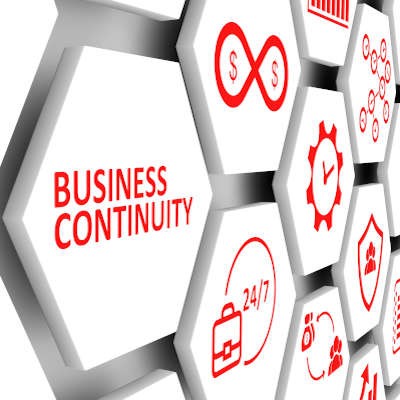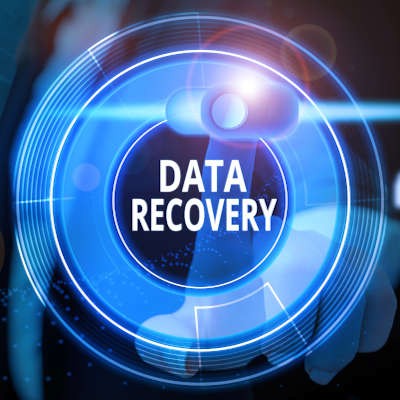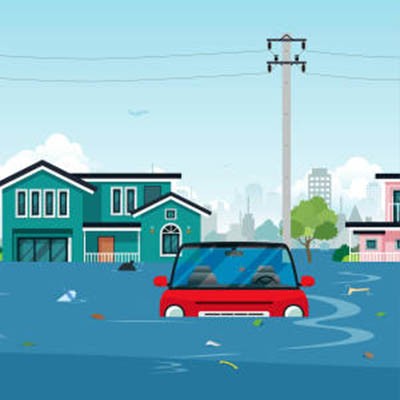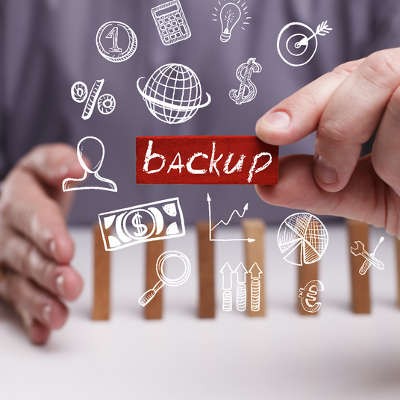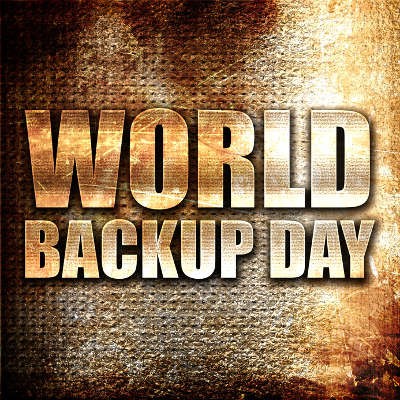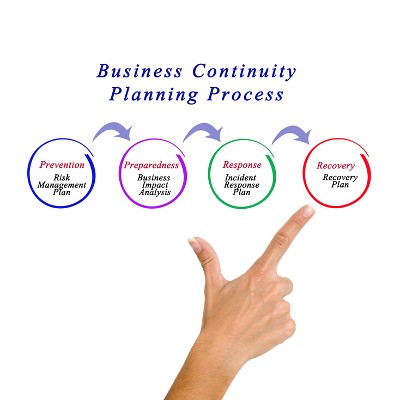Ferrum Technology Services Blog
When considering a continuity plan for your business, you need to consider some scenarios that may not ever happen. This is called risk management and it is the basis of keeping your business up and running regardless of the situations that it encounters. This month, we thought we would outline some of the variables that need to be addressed when creating a comprehensive business continuity plan.
Hope can be a big part of a person’s notion to start their own business. Needless to say that entrepreneurial hope doesn’t always consider that there will be a global pandemic that grinds the operational effectiveness that you’ve spent years building to a halt. Hope does, however, play a big part in the creation of a business continuity plan. Today, we’ll briefly discuss why you should never lose hope and how being prepared stems from the same notion as starting a business.
The tragic reality of the COVID-19 pandemic is that businesses are in a very uncomfortable situation. As the virus made its way around the world, many businesses have had to enact their version of a disaster recovery policy. Not all businesses will look at this the same way, but if you want your business to have the kind of continuity that will allow it to get through tough situations like this, formally creating a disaster recovery policy will put you in the position to weather any storm you encounter.
COVID-19, or coronavirus, has been a major global health concern over the past couple of months. At this point, it is clear that this disease could have serious impacts on the workplace. We wanted to provide a brief rundown of good workplace and network health practices, as well as a few pointers on how you can handle health-based employee absences.
Imagine having a data backup and disaster recovery solution, thinking you’re prepared to handle anything that comes your way. Then disaster strikes and recovery is impossible. If you had tested your solution beforehand, it may have been possible to prevent this misstep entirely. What kind of disasters need to be prepared for, and how can you make sure your testing takes them into account?
While not every business needs to worry about hurricanes, the same can’t be said for other kinds of disasters out there. Tornadoes, fires, and other natural disasters could strike at any moment depending on geographical location, but if you’re prepared, you can limit the influence these events have on your organization’s future.
As headlines shout about Hurricane Florence approaching the East Coast later this week, with Helene and Isaac also stirring in the Atlantic Ocean, it seems as good a time as any to discuss preparing your business for hurricane season; and, really any adverse weather effects that could negatively influence your business. Preparing your business for events like these is key to its survival, making it crucial that you know what your responsibilities are when awaiting a potentially devastating event such as a hurricane.
Each organization has a different definition for how they define a disaster. One business might feel that they can get away with losing a few files here and there, while another might need every file to be secure and protected against data loss. Regardless, the importance of being able to define the severity of a disaster cannot be underestimated, as you will need to properly gauge just how much hot water your business has landed in before it can pull itself up by the bootstraps and push forward.
Over one-third of businesses don’t have any means of backing up their data. This is a major problem, especially considering how many threats there are that can derail operations. For managed IT providers like us, this is painful, as it’s unfortunate to hear about data disasters that could easily be prevented. We’ll discuss some of the biggest reasons why your business needs data backup and disaster recovery.
Having consistent access to data is what drives business. If you can’t access mission-critical data, then you experience what’s called downtime, which drives profits into the ground. Therefore, you need to keep your data safe, especially if you want your company’s future to be prosperous. Therefore, you need data backup and disaster recovery.
It’s a nightmare situation for any business owner when all of their essential data suddenly disappears. Fortunately, there are measures that you can take to turn this nightmare into an inconvenience. However, you must also be certain that these measures are adequate to keep your data safe, despite the worst of circumstances.
Remember, there is a difference between a “disaster” and a “data disaster,” although the two are often connected in a cause-and-effect kind of way. A disaster is some event that puts a business in peril, oftentimes leading to a data disaster, where some large degree of data loss is experienced.
Keep in mind, a data disaster doesn't rely on a “typical” disaster in order to take place. Hardware failure, user error, and hacking attacks can all contribute to a data disaster.
Either way, nothing about any type of disaster is easily manageable. Either can have serious repercussions for your business if you don’t have a backup solution preemptively in place. However, this backup solution should meet certain criteria:
- Backups should be taken multiple times a day, ideally as often as every 15 minutes.
- It must be stored in multiple offsite locations. This will help keep your backup from being destroyed by the same disaster that took your original data.
- It must be tested on a regular basis to make sure it works. Otherwise, you may as well not have one in the first place.
Keep in mind, maintaining a backup solution is only half of the business continuity battle. Preserving your data is important, but should a true disaster endanger your business, you’ll need a comprehensive Backup and Disaster Recovery plan.
If there’s one concept that every business owner needs to be intimately familiar with, it’s business continuity. Boiled down, the concept tackles the question of how your business will carry on after a disaster situation has struck. While a business continuity plan is by no means a simplistic document, there are a few key points that all businesses should focus on.
Even the best plans can fall to unexpected circumstances, especially in terms of business technology solutions. Even if you spend countless hours planning out your system infrastructure, there’s always the possibility that an unseen actor could threaten the future of your business. Therefore, it’s crucial that you take into account the need for a data backup and disaster recovery plan.
Data loss can come from any number of situations. One of the most common scenarios comes from hardware failure, in which a device (such as a server or workstation) fails to perform properly, resulting in a significant amount of data being lost. You can’t ignore the possibility for fires, flooding, earthquakes, electrical storms, and all of the other threats out there that can end your infrastructure. There’s also the omnipresent threat of user error, which is the risk presented by one of your most critical assets--your employees--making mistakes like deleting or overwriting important data.
You probably don’t need us to tell you that data loss isn’t something to take lightly. While there are certainly other factors, data loss is a leading cause of organizations going out of business. Most companies that experience data loss are out of business soon after the incident.
To counter these concerns, organizations need a method of safeguarding their files from unpredictable data loss incidents. A comprehensive data backup and disaster recovery solution is the perfect way to keep your IT infrastructure secured and up-to-date.
In fact, a BDR solution is perhaps one of the most critical components of running a business. If your organization should fall victim to a data loss incident, a BDR solution has the potential to restore your backed-up data and get your systems up and running again. It’s a best practice that this solution store your data off-site and isolated from your in-house systems. The reason: even if your entire in-house infrastructure is destroyed, your data backups will be safe and sound.
It’s no secret that data backup is an important part of any IT strategy for small and medium-sized businesses. Backup and disaster recovery makes all the difference in keeping your business afloat in the event of a data loss incident. However, there’s still some debate over what the best approach is. According to a recent survey, it seems that many businesses find that both in-house and cloud-based backup solutions are needed in order to guarantee business continuity.
The search for the perfect way to handle a data loss disaster has led many businesses to implement data backup and disaster recovery solutions, but the most challenging part of doing so is finding a solution that can minimize data loss and recovery time. Furthermore, there’s a specific need to understand the difference between data backup and disaster recovery, as the two are certainly not the same thing.
These days, businesses practically expect disaster. With so many high-profile hacking attacks in the news, people are paranoid and fear for their data. Yet, even more businesses don’t fear enough, which can lead to unexpected data loss from hackers, natural disasters, and even user error. As a business owner, it’s your responsibility to ensure that your organization is prepared to handle disasters of all kinds.
 Business owners have many important decisions they must make pertaining to the continuation of their organization. Securing their company’s data may come off as yet another item on a to-do list, but, due to the critical role data plays in the day-to-day operations, this task should be a high priority for every modern business. Raising awareness of this critical issue is precisely why March 31st is World Backup Day!
Business owners have many important decisions they must make pertaining to the continuation of their organization. Securing their company’s data may come off as yet another item on a to-do list, but, due to the critical role data plays in the day-to-day operations, this task should be a high priority for every modern business. Raising awareness of this critical issue is precisely why March 31st is World Backup Day!
 For eons, the human species has sought to improve efficiency through the integration of new innovative technologies. We always push toward the bright new future, a garden filled with shimmering hardware and the sweet, sweet smell of silicon. Everything is running smoothly, just like music, until you hear a note that doesn’t belong. Instead of a chorus of heavenly angels serenading you as you open the door to your server room, you hear the sound of failure; hardware failure, to be specific; and it’s not pretty.
For eons, the human species has sought to improve efficiency through the integration of new innovative technologies. We always push toward the bright new future, a garden filled with shimmering hardware and the sweet, sweet smell of silicon. Everything is running smoothly, just like music, until you hear a note that doesn’t belong. Instead of a chorus of heavenly angels serenading you as you open the door to your server room, you hear the sound of failure; hardware failure, to be specific; and it’s not pretty.
 A thorough data backup is important for your business continuity plan, and so is a fast and efficient disaster recovery solution. What's that? Aren't those the same thing? Unfortunately, the two concepts are far from the same thing, but many business owners are still under the impression that their data backup is also a disaster recovery solution.
A thorough data backup is important for your business continuity plan, and so is a fast and efficient disaster recovery solution. What's that? Aren't those the same thing? Unfortunately, the two concepts are far from the same thing, but many business owners are still under the impression that their data backup is also a disaster recovery solution.

